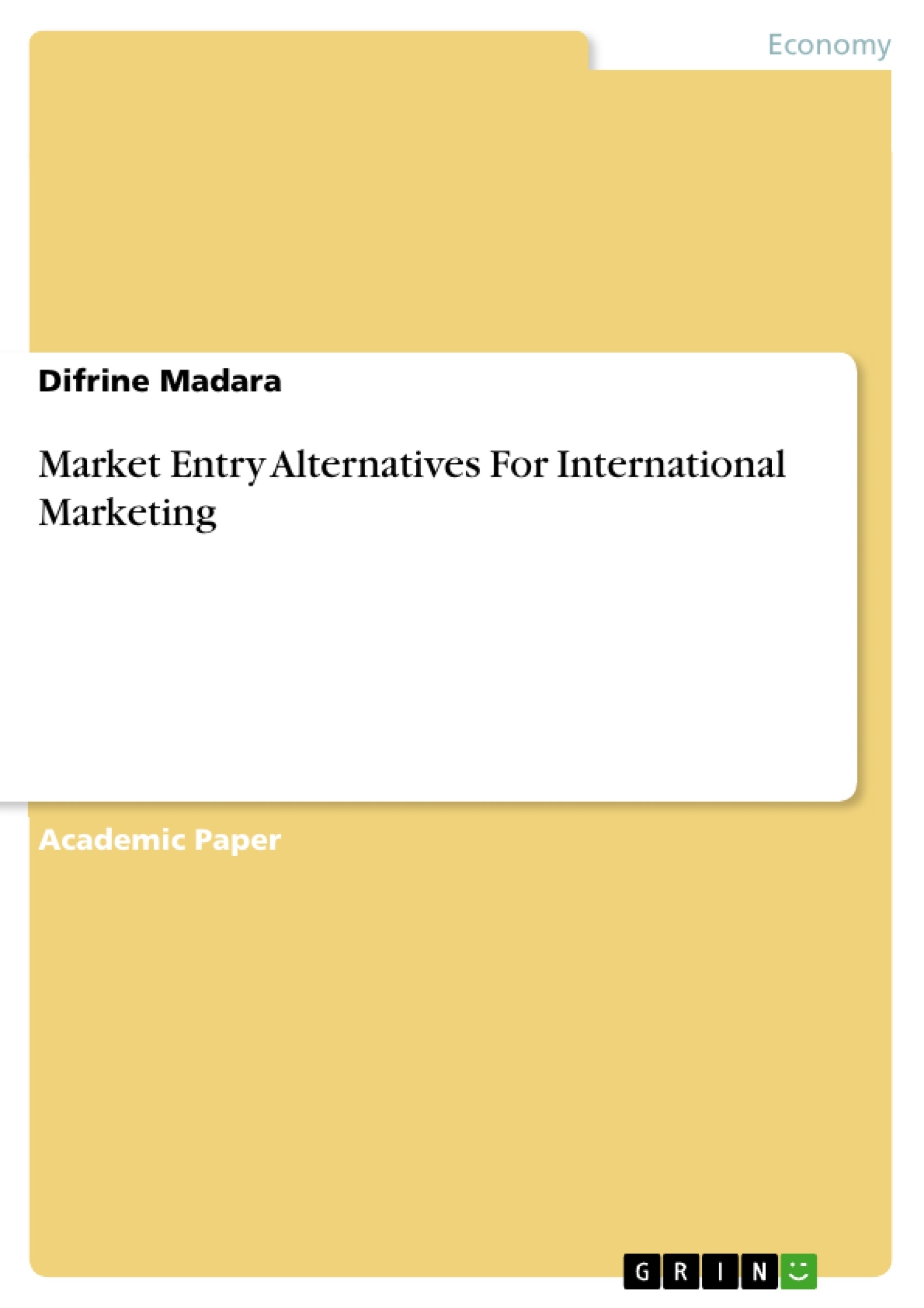This paper evaluates various entry options of the company BrewDog with their introduction of a new non-alcoholic drink to the United States market with an aim of selecting the most appropriate option.
BrewDog is a multinational brewery and pub chain headquartered in Ellon, Scotland. From the beginning, the founders of BrewDog adopted a management strategy that focused on innovation of unique beer products and targeting those who were tired of the industrial beer. The vision of BrewDog is to lead the revolution of the beer industry and redefine British beer drinking culture.
Nonetheless, BrewDog products are yet to penetrate other valuable markets such as the United States. To enter United States market, the company plans to introduce a new non-alcoholic drink called Punk AF. The challenge for the marketers and managers is thus to determine the best entry alternative into the United States.
Inhaltsverzeichnis (Table of Contents)
- Introduction
- Discussion
- BrewDog's market entry alternatives
- Selected entry alternative: Licensing
- Conclusion
- References
Zielsetzung und Themenschwerpunkte (Objectives and Key Themes)
This paper examines BrewDog's market entry options for the United States, specifically for its new non-alcoholic drink "Punk AF". The goal is to determine the most appropriate entry alternative by evaluating various approaches and their advantages and disadvantages.
- Market entry strategies for foreign companies
- The rapidly growing craft beer market in the United States
- Benefits of global expansion for companies
- The advantages and disadvantages of different market entry alternatives
- The role of brand recognition and market share in successful market entry
Zusammenfassung der Kapitel (Chapter Summaries)
- Introduction: This chapter introduces BrewDog, its background, and its vision to revolutionize the beer industry. It highlights the company's existing success in the UK and its desire to enter the US market with its new non-alcoholic drink "Punk AF".
- Discussion: BrewDog's market entry alternatives: This chapter discusses the growth of the craft beer market in the United States and the benefits of global expansion. It also presents several market entry strategies that BrewDog could consider, including direct exporting, licensing, franchising, partnering, joint ventures, and buying a company.
Schlüsselwörter (Keywords)
This paper focuses on the key topics of market entry strategies, the craft beer market, global expansion, licensing, franchising, and brand recognition.
- Quote paper
- Difrine Madara (Author), 2019, Market Entry Alternatives For International Marketing, Munich, GRIN Verlag, https://www.grin.com/document/588146



